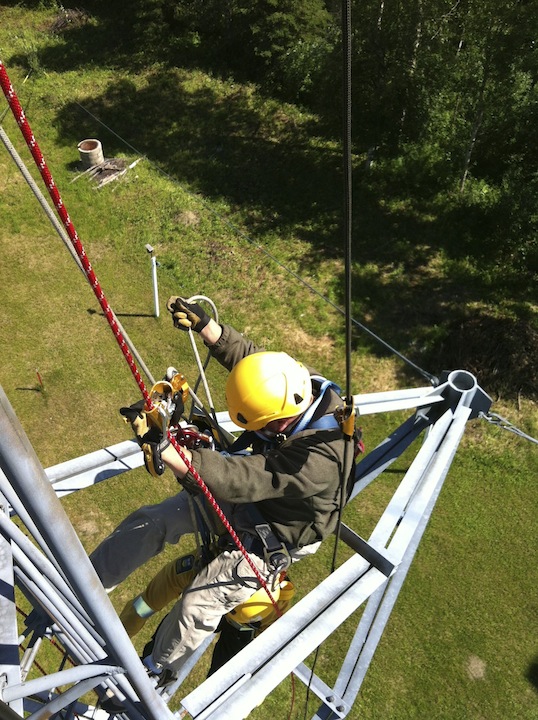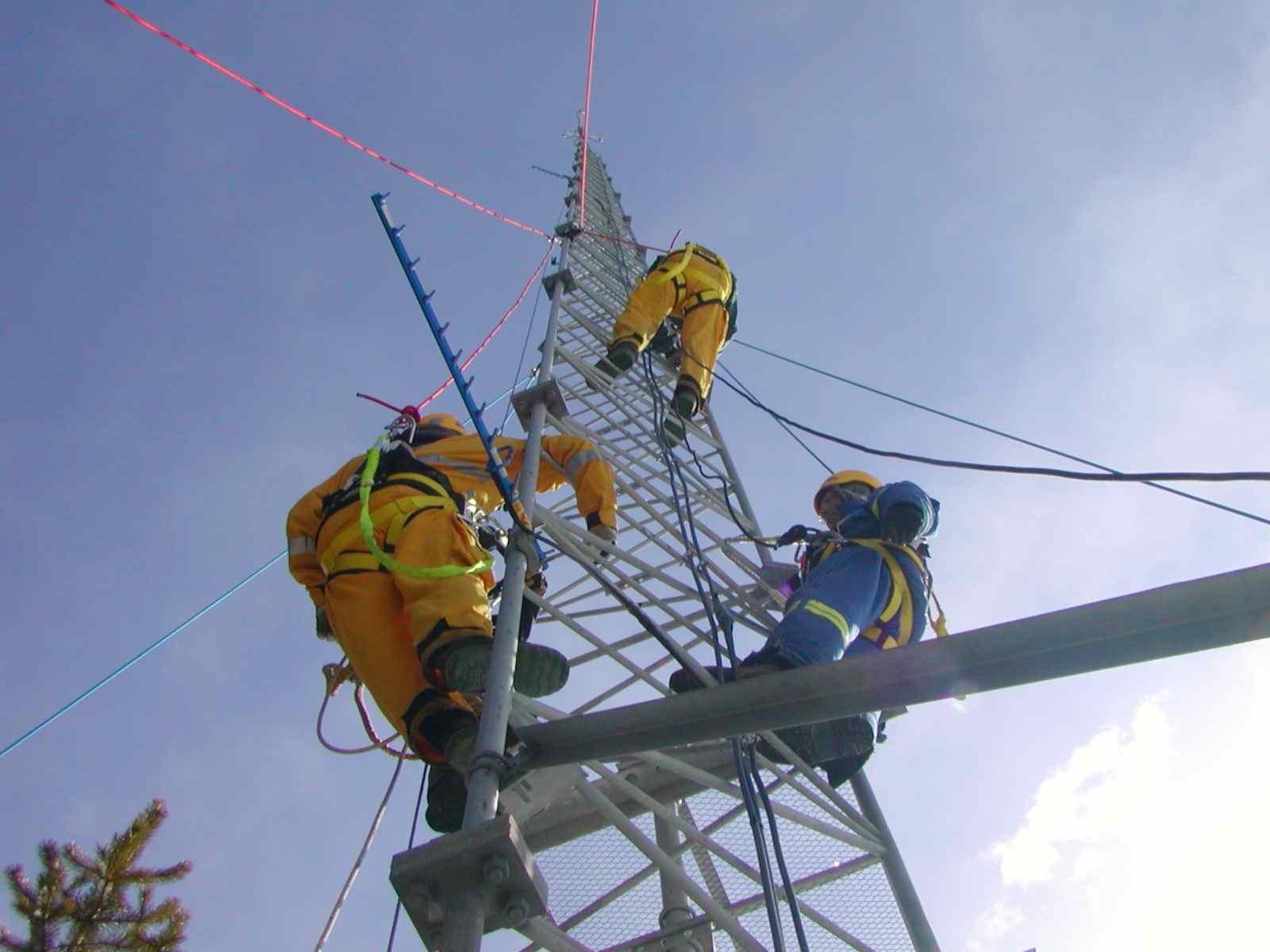SEQUENTIAL FALLS ON HORIZONTAL LIFELINES
When horizontal lifelines are tested to determine whether they are safe to use with multiple workers, the test masses are dropped simultaneously, or as close to the same time as possible. When the first CSA tests were designed, it was thought that the worse case fall was more than one worker impacting the lifeline at exactly the same time. In fact, this is not the worst case scenario.
One of the known hazards of using horizontal lifelines is what is called a "sequential fall". In a sequential fall, one worker falls and the second worker (or third worker as well) on the same span falls immediately after. The second worker may fall because the deflecting lifeline pulls on his lanyard or comes in contact with his body but also may fall just because the first worker’s fall is alarming and the second worker loses his balance. As you can imagine, this is a greater risk if workers are in close proximity to each other or working on same side of the lifeline on a narrow beam.
If the lifeline has an inline energy absorber that absorbs forces on the anchors, a long span can deflect to beam level or farther. Because the lifeline has deflected to near the second workers feet, the second worker could take a factor 2 fall.
There are several risks associated with this situation. The length of the second worker’s fall may cause his personal energy absorber to deploy to its limit which imparts a much higher force on the lifeline and the worker. The second problem is the lifeline energy absorber has aleady deployed significantly and will now take an even larger force when the second worker’s lanyard impacts the lifeline. This may bottom out the lifeline energy absorber which compromises the anchor. The falling distance of the second worker is a concern because he is more likely to hit the structure or may actually hit the worker who started the whole problem. And finally, the defecting lifeline may cause serious injury by trapping the feet or legs of the second worker.
There are several precautions that can be taken to reduce or help eliminate the risk of a sequential fall. Certainly raising the lifeline and using an SRL instead of lanyards will eliminate the problem. However, here is what you can do if lanyards are being used:
1. where possible, only one worker on the same lifeline span (this will eliminate a sequential fall)
2. if this is not possible, workers should avoid working in close proximity, especially on a long span
3. add intermediate anchors to shorten the span (a shorter span will deflect less in a fall, shortening the free fall of the second worker)
4. if workers are on a narrow beam with fall exposure on both sides, have the workers walk on the opposite sides of the lifeline (this will prevent trapping the legs of the second worker)
With some exceptions, all testing for 2 workers has been done by releasing the test weights simultaneously and using E4, or equivalent, personal energy absorbers. Recent testing shows evidence that dropping the second weight 1/2 sec after the first results in unacceptable shock loads on the second worker especially when there is a long span (the energy absorber bottoms out!!). This is a very real scenario that is often brought up in my classes by ironworkers but there is very little testing data to cause alarm.
These are some recommendations that I have used, but in every situation the person administering the fall protection program must consider compliance with local regulations, standards requirements and the manufacturer’s instructions:
1. when the span cannot be shortened, it might be better for both workers to use E6 energy absorbers on their lanyards or an energy absorber that is less likely to bottom out (even lighter workers). This must be discussed with the manfacturer.
2. remember to add any extra deployment distance of a different energy absorber to the clearance calculation
3. use a lanyard with an E6 energy absorber or equivalent that has lower impact forces (some manufacturers have E6 energy absorbers that have impact forces only slightly higher than the maximum for an E4)
4. if lanyards with higher capacity energy absorbers are not available, intermediate anchors must be used to shorten the effective span to 30 feet or preferably less.









